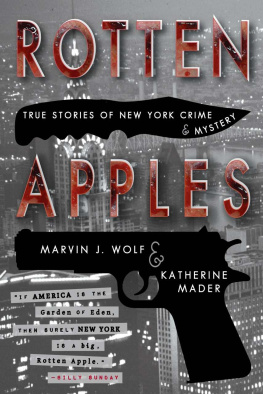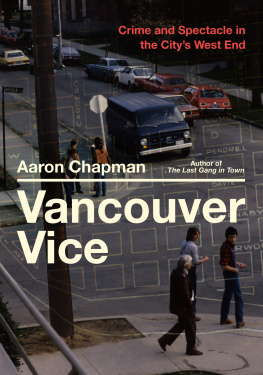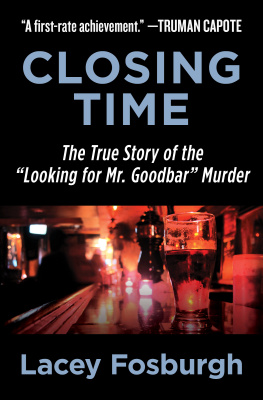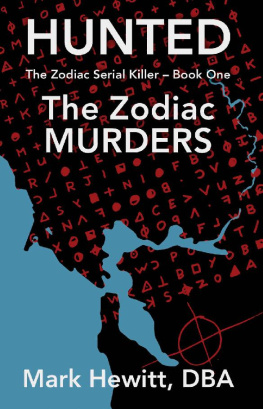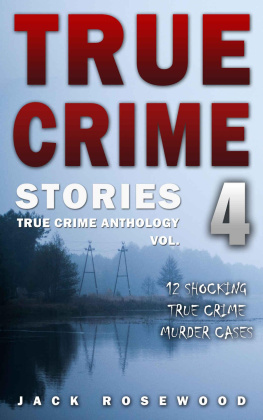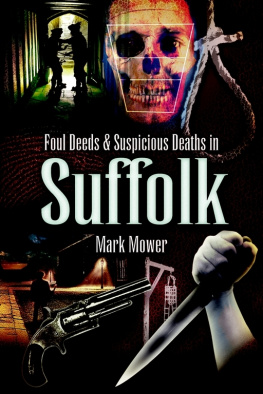ROTTEN APPLES
True Stories of New York Crime and Mystery
MARVIN J. WOLF and KATHERINE MADER
Antenna Books
Brooklyn, NY

ROTTEN APPLES: TRUE STORIES OF NEW YORK CRIME AND MYSTERY. Copyright 1991 by Marvin J. Wolf and Katherine Mader. All rights reserved. Published in the United States of America. No part of this book may be used or reproduced in any manner whatsoever without written permission except in the case of brief quotations embodied in critical articles and reviews.
Library of Congress Cataloging-in-Publication Data
Wolf, Marvin J.
Mader, Katherine
Rotten apples: true stories of new york crime and mystery /
c Marvin J. Wolf and Katherine Mader
p. cm.
ISBN: 978-1-62306-021-3
Crime in New York, 1689-1989. 2. New York CityUnited StatesTrue Crime. I. Title
Originally published in trade paperback by Ballantine, July 1991
Antenna Books ebook edition, June 2014

www.antennabooks.com
The Chorus Line Of Crooks And Killers Who Helped Make The Big Apple One Hell Of A Town...
- Alexander Stewart, pioneering nineteenth-century businessman, invented the modern department store. His earthly remainsstolen from his fortress-like cryptbecame the object of a grisly bargaining war.
- Kitty Genovese was brutally murdered in full view of numerous neighbors who watched and did nothing. How could this happen?
- Convicted murderer John Colt happily married his fiance on the eve of his hangingand then, just as happily, committed suicide. Or did he? His friend, Edgar Allan Poe always believed that Colt escaped and lived to laugh at the hangman.
- Career criminal-turned writer Jack Henry Abbott was championed by literary lion Norman Maileruntil Abbott decided that the knife was mightier than the pen.
Click each location link to visit the scene via Google Maps!
Also By Marvin J. Wolf and Katherine Mader
Fallen Angels
Perfect Crimes
Also By Marvin J. Wolf
For Whom the Shofar Blows
Family Blood: The True Story of the Yom Kippur Murders
Buddha's Child
Where White Men Fear To Tread
Beating the Odds
The Japanese Conspiracy
For Katherines parents-in-law, Albert and Isabel Kulla,
and their magnificent son, Norman.
And for Tomi, a.k.a. Laura, a.k.a. Sunni, a.k.a. Annie
If America is the Garden of Eden, then surely New York is a big, rotten apple.
Billy Sunday
Table Of Contents
1. 1689:
2. 1741:
3. 1776:
4. 1788:
5. 1804:
6. 1841; ?
7. 1863:
8. 1871:
9. 1872:
10. 1878:
11. 1891:
12. 1892
13. 1895:
14. 1900:
15. 1901:
16. 1904:
17. 1906:
18. 1907-1938
19. 1909:
20. 1911:
21. 1912:
22. 1920:
23. 1927:
24. 1928-1934:
25. 1928:
26. 1929:
27. 1930:
28. 1935:
29. 1935:
30. 1941:
31. 1943:
32. 1963:
33. 1964:
34. 1965:
35. 1972:
36. 1973:
37. 1976-
38. 1978:
39. 1980:
40. 1981:
41. 1986:
42. 1987:
43. 1989:
ACKNOWLEDGMENTS
In the beginning there was a contract.
The authors, represented by loyal, assertive-yet-sensitive, Beverly Hills laid-back agent Michael Hamilburg, and the publisher, represented by New York-Midtown calm, highly organized, insightful editor Cheryl Woodruff, haggled over the fine print.
There were the usual compromises. And then it was signed. The project was launched. Wolf happened to mention the book-to-bes title to novelist, screenwriter, and futurist Harlan Ellison. Ellison suggested the Billy Sunday quote that begins the work. Wolf and Mader appreciate his generosity. Then things got complicated. In the usual scheme of thingswhich is to say, for the two previous books and several magazine articles the collaboration has producedMader researches, Wolf writes. Mader reviews first drafts. She annotates, questions, and checks facts presented against facts unearthed. After quibbling, Wolf repairs his wounded ego, and then rewrites, polishes, rewrites.
Normally Mader does her number in a few hours a week stolen from her full-time job and her family. Her husband, Norman Kulla, grumbles but is secretly proud. Wolf does his part as Mader s bulging manila folders trickle in. Usually hes got other things to write, but he makes sure Maders manila doesnt get too deep. Usually he can turn out three or four chapters a month. Not this time. This time there was a lesbian nurse murderess. And there was a man who saved Hollywood while reinventing network television. The murderess and the mogul have never met. Its doubtful theyve ever heard of each other. Nevertheless each had an effect on the collaboration.
Mader, then a deputy Los Angeles County district attorney, had to prosecute the lesbian nurse for the stabbing and mutilation murder of her male housemate. Wolf had to help the mogul with his memoirs.
Each job turned out to be far bigger than it had first seemed. Mader and Wolf had their hands full for months. Time trickled away. Enter Ellen Malino James, warm, voluble, charming, a woman of scholarly accomplishment, a radio personality, a writer in her own right.
Relentlessly bicoastal, James knows libraries on both coasts. She knows microfiche. She knows books and authors. She knows New York, having spent most of her life in Manhattan. And James knows New Yorkers. Mader created a research plan. Bursting with enthusiasm, James did much of the legwork. She did a terrific job.
James had help from New York screenwriter Stanley Ralph Ross. He saved her many hours by recalling the location and new name of an old Coney Island hotel where a Mafia stool pigeon took flight. Charles Rembar, author of a book on libel, was very helpful in deciphering the obliquely snide slurs used by New York newspaper editors in the Thirties.
By the time Mader s murderess was convicted, Wolf had finished his moguls memoir and was moving rapidly through the manila folders. What remained was visiting the crime sites. Wolf likes these expeditions. So does Mader. But Mader had the penalty phase of her murder trial to argue. Wolf went alone. He was fortunate to have the use of the apartment of old friends and newlyweds Joseph B. Treaster and Barbara Dill.
Wolf had been to New York dozens of times since 1966, but after an early experiment he had sworn to avoid driving a car through the streets of Manhattan at all costs. So he needed someone to take him around. Someone who knew one-way streets, bridges between boroughs, shortcuts between the East Side and the West Side, between uptown and downtown. Someone who wasn t afraid to drive through the South Bronx.
Wolf found a friend of a friend. Carl Sturmera fine actor. Sturmer knows and loves the boroughs boulevards. He offered his car and he drove. Wolf watched and listened and absorbed the vibrations. He came back to Los Angeles with a notebook full of scribblings the same week that a Los Angeles jury voted to send a convicted murderess to the gas chamber, Wolf finished writing. Both Mader and Wolf made their deadlines.
Introduction: The Stones Speak
In Central Park, a moment s stroll from West 72nd Street, lies Strawberry Fields , a meditation area. Featuring a mosaic with a simple yet profound message, Imagine, the area is dedicated to the memory of John Lennon, musician and prophet. It gets its share of visitors.
Next page
